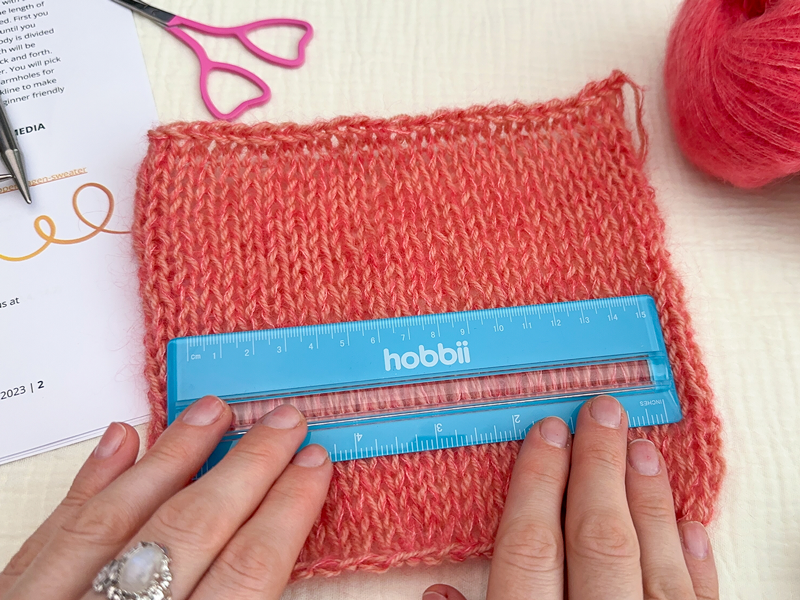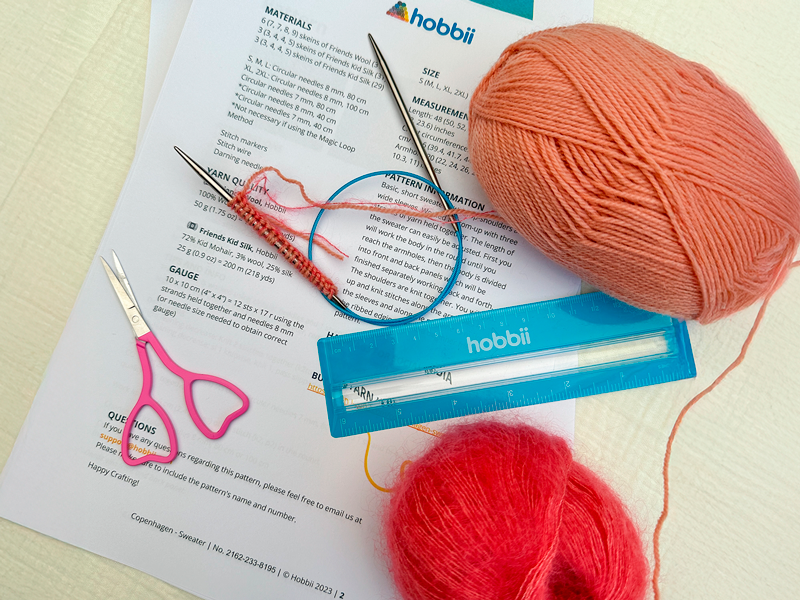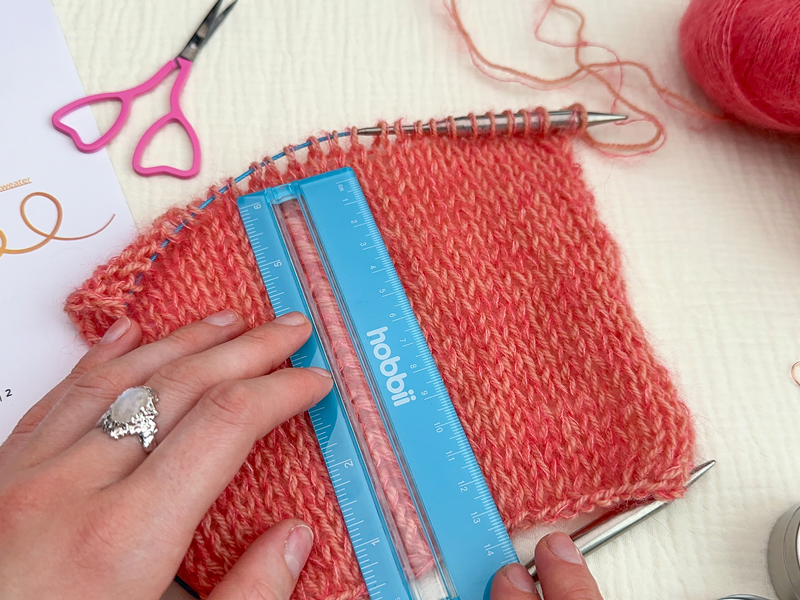Want to make sure your next knitting project fits perfectly? Here’s how to knit and measure a swatch for the right size and tension. 🎯

We get it — when you’re excited to start a new knitting project, taking the time to knit a little square might feel like an unnecessary detour. But trust us, this small step can make all the difference in how your finished piece turns out. Whether you’re making a sweater, cardigan, hat, or scarf, a simple knitting swatch will help ensure that your project ends up the right size and fit. 📏🧶
In this guide, we’ll walk you through why swatching matters, how to make one (spoiler: it’s super easy), and how to measure your knitting gauge properly so you can knit with confidence.
Why Make a Knitting Swatch?
Think of a swatch as your project’s safety net. It helps you:
✅ Make sure your finished project will match the pattern’s intended size
✅ Check that your tension (how tightly or loosely you knit) is correct
✅ Avoid running out of yarn halfway through
✅ Get a feel for the stitches and yarn before you dive in
Patterns are written based on a specific knitting gauge — that is, how many stitches and rows fit within 10 x 10 cm.
If your tension is different from the pattern’s gauge, your project may end up too big, too small, or use too much yarn. A swatch will help you avoid all of that.

How to Knit a Swatch
Most patterns will give you a suggested swatch — often in stockinette stitch (knit on the right side, purl on the wrong side) — or in the stitch pattern used in the project.
Always check the pattern 💛 If the pattern has a specific stitch pattern for the swatch (like lace, texture, or cables), use that.
But if you’re just testing a yarn, needle size, or your general tension, a simple stockinette stitch swatch is perfect.
Here's How to Make a Stockinette Stitch Swatch
- Check the pattern's gauge recommendation. For example, it might say: 20 stitches x 28 rows = 10 x 10 cm in stockinette stitch.
- Cast on extra stitches. To get an accurate measurement, your swatch should be slightly bigger than 10 x 10 cm — we recommend adding 4–6 stitches and a few extra rows. So if the pattern gauge says 20 stitches, you could cast on 24–26 stitches.
- Knit in stockinette stitch: Knit all stitches on the right side, and purl all stitches on the wrong side.
Knit until your swatch is about 12–14 cm in height. Then bind off loosely and prepare to measure!
Should You Wash Your Swatch?
Short answer: Yes! 🫧🧼
Many yarns behave differently after washing — they might stretch, relax, or shrink slightly. To get a realistic measurement, wash and dry your swatch the same way you plan to wash your finished project. This is especially important for garments!
Knitting with Wool? A Step by Step Guide: How to Wash Wool Yarn
Should You Block Your Swatch Before Measuring?
That depends! The best rule is: treat your swatch like your finished project.
If you plan to wash and lay your garment flat to dry, do the same with your swatch. If the pattern suggests blocking, block your swatch too. This helps you get the most accurate gauge — no surprises later!

How to Measure Your Knitting Gauge
Once your swatch is dry and flat, it’s time to measure:
- Place your swatch on a flat surface.
- Use a measuring tape, ruler or gauge measuring tool to measure a 10 x 10 cm square in the middle of your swatch (avoid measuring the edges — they can be a bit wobbly).
- Count how many stitches fit horizontally within 10 cm.
- Count how many rows fit vertically within 10 cm.
Compare your numbers to the pattern’s recommended gauge. 📏
What If Your Gauge Doesn’t Match?
It’s totally normal to have to adjust! Here’s what to do:
- If your swatch is too tight, and you’ve got too many stitches: Try larger needles.
- If your swatch is too loose, and you’ve got too few stitches: Try smaller needles.
Getting the right tension now will save you time and yarn later — and make sure your finished project turns out exactly how you want it.
💡 Quick Tips for Swatching
✨ Most patterns will list gauge in centimeters (cm).
✨ Knit a slightly larger swatch so you can measure in the middle without edge distortion.
✨ If the pattern gives a specific swatch stitch pattern — use it! Stockinette stitch is great for testing yarn and needles, but some patterns require a textured swatch for accuracy.
What’s Next?
Once your swatch matches the pattern’s knitting gauge, you’re ready to cast on and start your project! If your swatch doesn’t match, adjust your needles and try again — it’s worth the extra effort to make sure your project turns out the right size.
A little swatch now = a lot of knitting happiness later. 💕
Happy knitting from Hobbii 🫶
